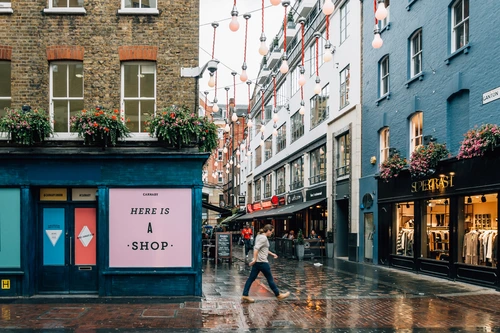
Earlier this year, Westminster Council said: “Previous attempts to pedestrianise Oxford Street have met significant opposition and we have considered the concerns raised about the potential impact on public transport, traffic diversions and disabled access in the area.” Thus, complete pedestrianisation is not the way forward.

Though few metropolises are prepared to launch plans of this type immediately, the trend towards car-free city centres is still clear. Increasing urbanisation has gone hand in hand with a growing appreciation of cities and the public realm.
In recent years districts of Milan, Dublin, Paris, Madrid and Brussels have all been closed to private cars. India had its first officially car-free city in 2008, while even China is working on building its own.
Across the channel from London, Paris has trialled banning cars from its own business district for a day. The move was ostensible to celebrate European Mobility Week, but it also served as a valuable pilot scheme that is likely to be put into practice again in the future. Though European cities tend to already be far more walkable than those around the rest of the world, these incremental steps are gradually minimising barriers to formal pedestrianisation.
Have any cities in the UK undergone pedestrianisation?
The UK’s biggest cities are heading in that direction, too. Some cities are pedestrianising entire districts, such as that announced in Birmingham; other cities are also taking smaller steps to a similar end.
In 2011 the EU proclaimed that all of its member cities should be free of petrol-powered cars by 2050. That suggestion was met by resistance from the UK government on the grounds of civic autonomy – yet many UK cities are likely to meet that target under their own steam even though the UK has since left the EU after the drawn-out Brexit process.
At the local level, some London boroughs have been embracing low-traffic neighbourhoods, though cities such as Oxford met the initiative with some resistance. (London’s ULEZ expansion has also done its part to get cars off the streets.)
The human scale of pedestrianisation
But why are so many cities looking towards pedestrianisation – and what does it mean for their inhabitants?
Of course, the need to reduce vehicle dependence and improve air quality is a huge driver. But so is the need for what Danish architect and planner Jan Gehl termed the “human scale”.
Gehl’s thesis that cities should be shaped towards facilitating human interaction led to the reinvention of Copenhagen’s city centre for pedestrian use in the 1960s. The aim was, fundamentally, to make urban centres a more pleasant place to work and live.
And it has proved hugely successful. Following the main stage of Copenhagen’s pedestrianisation (reclaiming the Stroget, its main retail street) footfall increased. But the real victory was not in increasing commerce but in allowing people to use the public realm. The number of people using the streets doubled. Café culture boomed.
Copenhagen’s reinvention was widely praised, and in the decades following tourism and migration increased significantly. Since then, Gehl’s ideas have been applied to cities all over the world
But pedestrianisation brings drawbacks too. Research from both major cities like Izmir, Turkey, and from relatively small towns like Hasselt, Belgium, show that, as you would expect, pedestrianisation of centres causes surrounding property prices to increase significantly.
The business case
In almost all cases retail businesses also benefit – a great thing for the city as a whole (and its tax-collecting authorities). But that inexorably leads to a rise in commercial rents, too. According to a report by property consultants Colliers Erdman Lewis, pedestrianising a site means an instant rental premium of as much as 50% over comparable vehicle-access sites. And with margins constrained, it tends to be the larger retail chains that are best suited to move in and take advantage.
All this means that pedestrianised retail centres risk becoming further homogenised, with only the most high-end independent shops able to operate.
The challenge for policymakers is how to develop a city’s public realm and so attract footfall and businesses, but at the same time minimise the gentrification that comes with it. In major cities such as London and Paris, where we already see a doughnut effect of wealth concentrated in the centre, pedestrianisation could further increase the economic divide.
There is one reason to be optimistic. Pedestrianisation may create a stark contrast in property prices, dividing the “haves” in a relatively small pedestrianised zone from the “have-nots” outside it. But this could be mitigated by introducing pedestrianisation on such a scale that it becomes the norm, rather than the exception.
Governments may need to tread carefully – but we are moving towards a future of car-free urban centres. We will surely enjoy improved and more successful cities as a result.
[Read more: Are kid-friendly superblocks a way for residents to reclaim their streets?]






